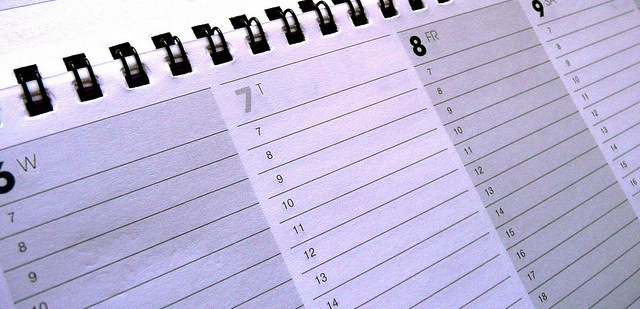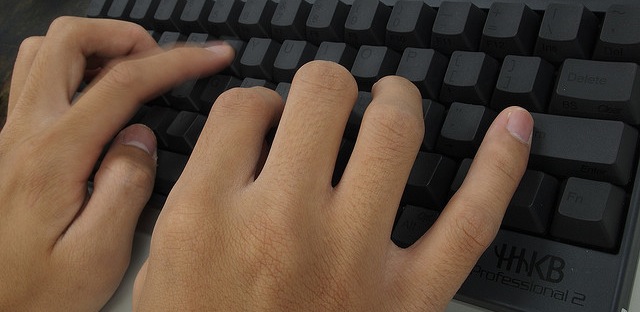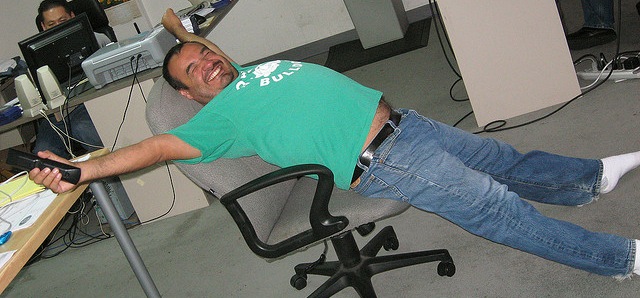We’re all well aware that sitting at a desk all day isn’t a healthy way to live, but many of us have to do it anyway. Fortunately, countering the negative effects of this way of life is incredibly easy with a schedule. Here’s what you’ll need to do.
Whether it’s sitting all day or ruining your eyes staring at a computer screen, office work is a lot more dangerous than you would think. All that inactivity can lead to serious problems in the long term. To come up with a schedule to counteract these negative effects, I spoke with Brian Parr from the Department of Exercise and Sports Science at the University of South Carolina Aiken. Before we get to that schedule, let’s take a quick look at exactly what office work does to your body.
Why a Schedule?

Creating a schedule to remind yourself to stand up and exercise might seem insane, but it’s clear we all need some type of motivation, because we’re not doing it on our own. We’ve talked before about how programming your day can really help you stick to something you would forget to do otherwise. In this case, it’s wrist exercises that don’t seem to make a difference at the moment, standing up, moving around throughout the day and getting away from your computer once in a while. The long-term impact on your health when you stick to this schedule is huge, and you don’t really need to do that much work.
The Health Problems We Need to Combat
It’s estimated that we sit for about 15 hours a day on average, and that causes all kinds of physiological changes in our bodies. Even worse, when we’re working in front of a computer, we also cause damage to our eyes and wrists. Here’s what that office job is doing to your body.
The Desk’s Effect on Your Overall Health

We’ve dug into the effects sitting all day has on your body before, and they’re not pleasant. Long-term effects include increased risk of heart disease and certain cancers. Even in the short term, sitting too much changes how your body deals with fats and leads to weight gain. The short of it, as described by ABC News, is pretty simple:
“When you’re sitting, the big muscles, especially in lower part of body, are completely unloaded. They’re not doing their job,” Owen said. That inactivity prompts changes in the body’s metabolism, Owen said, and produces a number of biological signals, what scientists call biomarkers, which are linked to cancer.
Basically, when you’re sitting, your body isn’t doing much, and that causes all sorts of long-term problems when you do it every day.
The Computer Screen’s Effect on Your Eyes

You get eyestrain when you look at anything for an extended period of time. Eyestrain might be from driving, reading or looking at a computer screen for too long. Typically, it doesn’t have any long term effects, but it can really ruin a day in the short term.
Eyestrain is an issue that affects anyone who looks at a computer screen all day. It has plenty of short-term symptoms, including dry eyes, blurred vision and headaches. Those annoyances are disruptive to your work day and make it hard to concentrate.
The Keyboard’s Effect on Your Wrists

Repetitive stress injury (RSI) is a problem that plagues a lot of office workers. For many, RSI manifests as carpal tunnel syndrome (CTS) in the wrists and fingers from extended use of the keyboard. CTS is a common condition that causes pain, numbness or a dull ache in the fingers and wrists.
CTS can go away without treatment, but that’s not always the case. The worst case scenario is surgery, but even non-surgical treatments, like wrist splints and corticosteroid injections, are annoying. Typically speaking, a good ergonomic workspace is the first step to preventing CTS, but it’s just as important to take breaks.
How to Formulate a Daily Schedule to Combat These Issues

There’s no magic bullet for avoiding the health problems associated with office work, but you can schedule your day in a way that allows you to avoid those problems as much as possible. With the help of Brian Parr, we’ve created a schedule for an average eight-hour workday to help you avoid these problems.
As Parr notes, the main goal here is simple: get away from the computer at least every half hour:
I think a good goal is 5-10 minutes of activity per hour. That could be five minutes every half hour or 10 minute each hour. Obviously, some workplaces are more supportive of taking short activity breaks than others. Many of these ideas can be done “secretly” and no one will know that you are trying to be more active.
The benefit here is significant. When you schedule out breaks in half-hour increments, you prevent eyestrain, RSI and the negative effects of sitting all in one go. The best part? You can actually get in a decent workout too. Parr explains what you’ll need:
I think that most people should be interested in all of these exercises, but some people may wish to focus on one area more than another. For example, someone who spends much of the day typing or doing data entry should focus on eye strain and wrist exercises than someone who does more work off a computer.
It makes sense to split up these exercises throughout the day. I think that getting up out of your chair, even for a few seconds to a minute at least every half hour is smart. Looking away from your monitor every few minutes to prevent eye strain is a good idea too.
So, a plan that includes 10 minutes per hour of activity could look like this:
- Five minutes spent up out of the chair moving around the office (getting coffee, the mail, toilet break).
- Five minutes spent doing stretches one hour, and five minutes spent doing strengthening exercises the next.
Obviously, there are endless ways to organise a daily “workout”, so people have lots of options. By the end of the day, it is reasonable that someone could stretch and strengthen all of the major muscle groups. For many people, that is a lot of exercise!
So, with that in mind, here’s a sample schedule you can follow to counter the effects of working that desk job. You can swap out any of these workouts for whatever you like, or move things around to fit your day — just make sure you at least somewhat follow the timing.
- 9am: Arrive at work.
- 9.30am: Get up and move around for five minutes.
- 10am: Five minutes of stretches. Start your day with a shoulder stretch, upper arm stretch and chest stretch.
- 10.30am: Five minutes of wrist exercises. Do the prayer stretch, wrist flexor and wrist extensor.
- 11 am: Five minutes of strength training. Pick a few exercises from this list or this list you’re comfortable doing in the office. Water bottle weight lifts, leg raises and calf raises are all excellent ways to get a little strength training in the office without drawing too much attention to yourself.
- 11.30am: Get up and move around for five minutes.
- Noon: Five minutes of stretches. This time do back stretches. Do a Lower back stretch, back and bicep stretch and reach for the sky.
- 12.30pm: Wrist strength training. Do squeezes, wrist rolls and wrist curls.
- 1pm: Five minutes of strength training. Pick a few exercises from this list or this list you’re comfortable doing in the office.
- 1.30pm: Get up and move around for five minutes.
- 2pm: Five minutes of stretches. Time for some leg stretches. Do five minutes of hamstring stretches, standing thigh stretches and leg extensions.
- 2.30pm: Get up and move around for five minutes.
- 3pm: Five minutes of strength training. Pick a few exercises from this list or this list you’re comfortable doing in the office.
- 3.30pm: Get up and move around for five minutes.
- 4pm: Five minutes of stretches. Do a chin tuck, head turn and side neck stretch.
- 4.30pm: Get up and move around for five minutes.
- 5pm: Leave work
That’s it. It might seem like a lot when you look at is a whole, but you’re essentially packing in over an hour of activity and exercise into your workday without really breaking a sweat. In the end, it’s countering all of the negative effects of that desk job, and keeping you healthy overall.
Pictures: Elnur, photosteve101, Mandiberg, bark, adikos, and Rick Hall

Comments